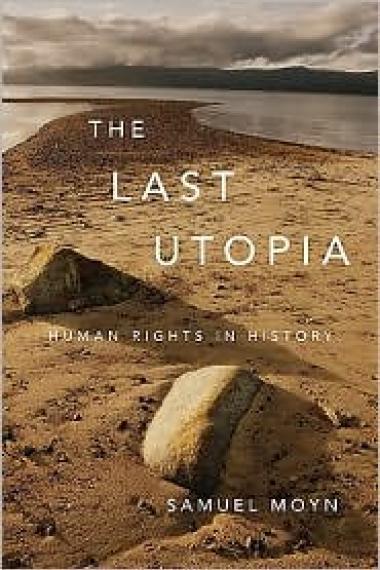Columbia University historian Samuel Moyn has written the first sober history of the doctrine of human rights. His book The Last Utopia—together with David Rieff’s A Bed for the Night (2002) and Paul Berman’s Power and the Idealists (2005)—is essential reading for anyone who wishes to understand the origins of our modern foreign-policy vocabulary.
Though many historians have traced human rights to the Enlightenment notion of the “rights of man,” Moyn draws a useful conceptual distinction. The “rights of man” described a “politics of citizenship at home,” in which the nation-state was seen as the ultimate locus of rights. But human rights activism implies a “politics of suffering abroad,” in which states are generally viewed as the problem. In this sense, the historical struggles of Jews, women, and blacks for the rights of citizenship—protections afforded by the state—were different from modern human rights struggles.
“Human rights” entered wide English parlance in the 1940s. In his 1941 Four Freedoms speech justifying America’s possible entry into World War II, President Franklin Roosevelt proclaimed that freedom meant “the supremacy of human rights everywhere.” The 1948 Universal Declaration of Human Rights codified and defined the concept of human rights in international law.
Moyn emphasizes that the human rights slogan failed for many years to percolate into the wider political discourse. Postwar anticolonialists invoked the principle of self-determination, not individual human rights. They were more interested in creating states than restraining them. Western sympathizers of anticolonial movements draped their idealism in the more militant doctrines of Marxist “Third Worldism.”
Activism based on the human rights idea only triumphed in the 1970s. Moyn synthesizes an impressive array of sources to describe its rise in different regions. In the West, Amnesty International—founded by British lawyer Peter Benenson in the early 1960s—pioneered the public “naming and shaming” strategy of human rights advocacy. Dissidents in the Soviet Union and its satellites, such as Václav Havel, adopted the human rights vocabulary after the violent crackdown that ended the Prague Spring of 1968. The 1975 Helsinki accords, intended to improve Cold War relations between the communist bloc and the West, included human rights provisions. The treaty spurred the creation of several groups—such as Helsinki Watch, later renamed Human Rights Watch—that demanded enforcement of the human rights clauses. President Jimmy Carter’s 1977 inaugural speech invoked human rights as the guiding principle of American foreign policy. In Latin America, activists fighting brutal military dictatorships appealed to human rights. And in France, a group of “New Philosophers” such as André Glucksmann and Bernard Henri-Lévy invented a new political vocabulary, which included a version of human rights activism.
The human rights idea finally triumphed as a basis for activism because, Moyn contends, other utopian political ideologies collapsed. It offered a pragmatic alternative to bankrupt, grandiose visions, such as communism. The claim that human rights transcended politics helped cement coalitions among diverse voices.
But Moyn is muddled about whether early human rights activism was philosophically—or just strategically—apolitical. Some of the Soviet bloc dissidents whom Moyn quotes suggest that their adoption of legalistic human rights rhetoric was tactical. Perhaps they understood that their goal was political—democratic transition—but publicly framed their struggle in the language of human rights to widen its appeal. Havel himself, in his landmark 1978 essay, “The Power of the Powerless,” warned against fetishizing the law. “Even in the most ideal of cases,” he wrote, “the law is only one of several imperfect and more-or-less external ways of defending what is better in life against what is worse. By itself, the law can never create anything better.”
In the book’s epilogue, Moyn reveals his own motive for narrating the history of the human rights idea: to bury it. He believes that the doctrine has mutated into the beast it was intended to slay: a utopian form of politics. In his view, the Reagan administration corrupted human rights by embedding it within a democracy promotion agenda. And Moyn lambastes the George W. Bush administration for hijacking human rights rhetoric to justify the Iraq war.
But if the birth of human rights activism was part of the struggle for democracy, then it is wrong to view democracy promotion as a perversion. Moreover, perhaps human rights activism was most successful in the 1980s—as a weapon against Soviet totalitarianism—precisely because dissidents were clear in their own minds about the liberal democratic preconditions of human rights. Moyn is right to assert that the human rights idea has gone wrong, but it’s not for the reasons he thinks.

